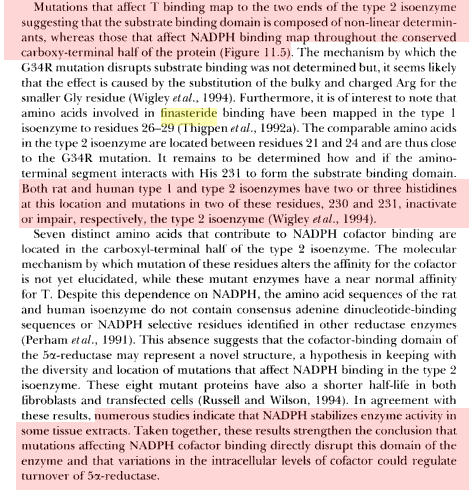Finasteride binds to NADPH, a co-factor of 5AR, in order to exert its 5ar inhibiting effects and prevent the conversion of T to DHT. What if 5AR2 NADPH catalyzation of Testosterone --> DHT has been disrupted post-Fin?
I would think this would only make sense if we all had extremely low levels of DHT post-Fin,since NADPH is required for 5AR to convert T --> DHT.
Thus, more than likely what I’m proposing holds no water because:
-
After quitting Finasteride, 5AR regenerates 1.5-2 weeks later, and begins producing DHT again (which seems to fit the pattern we all went through of feeling great after coming off for a brief period of time, before the crash in T)… thus, this would mean NADPH is likely working correctly.
-
Some guys here have perfectly normal or even elevated serum DHT levels after quitting, as noted in their bloodwork. Again, likely evidence that 5AR2 is producing DHT as required… although we can always debate other theories like “maybe it’s 5AR1 that’s responsible for the DHT” (even though 5AR1 only contributes ~30% of serum DHT) or “perhaps it’s just DHT that remains unbound because the androgen receptor can no longer harness it due to desensitization/mutation/downregulation”…
Still, just thought I’d throw it out there.
Biochemical and pharmacogenetic dissection of human steroid 5[alpha]-reductase type II.
jpharmacogenetics.com/pt/re/ … 29!8091!-1
From the patent on Finasteride and inhibition of 5AR2:
freepatentsonline.com/5962442.html
Genetics of Steroid Biosynthesis and Function
books.google.ca/books?hl=en&lr=& … #PPA328,M1
See attached image.

